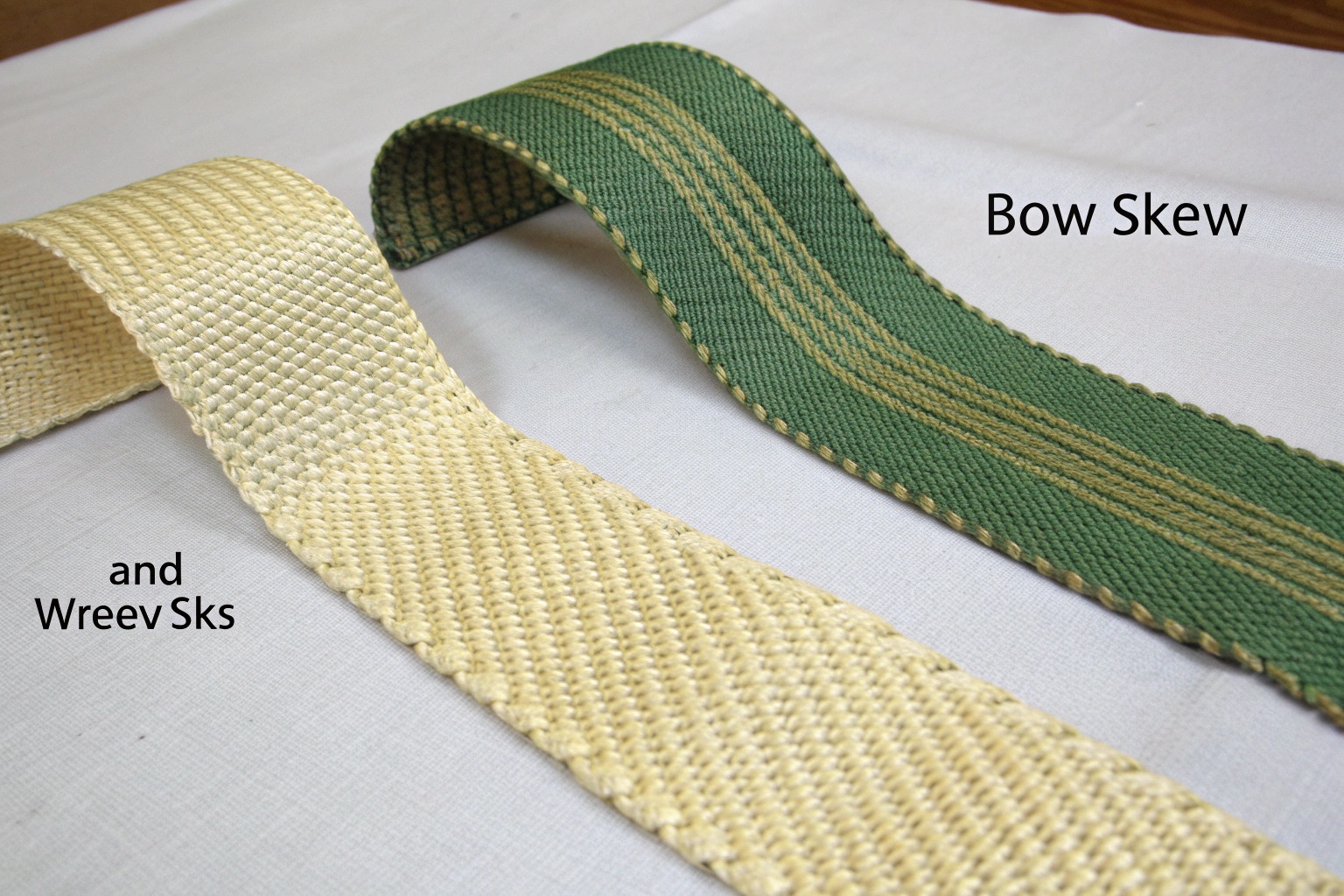As a fabric supplier with over two decades in the textile hub of Keqiao, I've seen how seemingly small issues like bow and skew can derail a major apparel order. Many of our international clients, especially those in the US like Ron, come to us with this exact concern. They need fabrics that not only meet quality standards but also ensure efficient production and minimize waste. Understanding and controlling bow and skew is fundamental to achieving that.
Simply put, bow and skew are distortions in woven fabric where the weft yarns do not run perfectly straight and perpendicular to the warp yarns. Bow is a curvature where the weft yarns bend in an arc, like a smile or a frown. Skew (or bias) is when the weft yarns are straight but angled diagonally across the fabric. Controlling them is not just about quality; it's about cost-efficiency and brand reputation. For any serious garment manufacturer, mastering this is non-negotiable.
If you've ever faced rejected shipments or inconsistent garment patterns, you know the pain. Let's break down these fabric defects so you can specify your requirements with confidence and ensure your supplier delivers flawlessly.
What are bow and skew in weaving?
When you unroll a few meters of fabric, the horizontal threads should form perfect straight lines. When they don't, you have bow or skew. These defects might seem minor on the roll, but they become major problems during cutting and sewing. They cause pattern misalignment, garment twisting, and an overall unprofessional finish. For brands focused on quality, this is a critical failure point that we help our clients avoid through rigorous in-house quality control.
Bow appears as a curved line of weft yarns across the fabric width. Imagine drawing a line along a single weft yarn; if it forms a "U" shape or an arc instead of a straight line, that's bow. It often happens during the finishing processes, like calendering or tentering, if the fabric is not fed evenly onto the finishing equipment. This distortion leads to parts of a garment panel not being on the true grain, causing one side of a shirt to hang longer than the other.
Skew presents as a diagonal line of weft yarns. Here, the weft yarns are straight but are no longer at a perfect 90-degree angle to the selvage (the finished edge of the fabric). This is sometimes called "bias." A common cause is the handling of tubular knits (which are then cut open) or during dyeing where the fabric flow in the machine creates a dragging effect on one side. Garments made from skewed fabric can twist after washing, leading to customer returns. Our CNAS-accredited lab specifically tests for these defects to ensure every meter we ship meets the highest international standards.
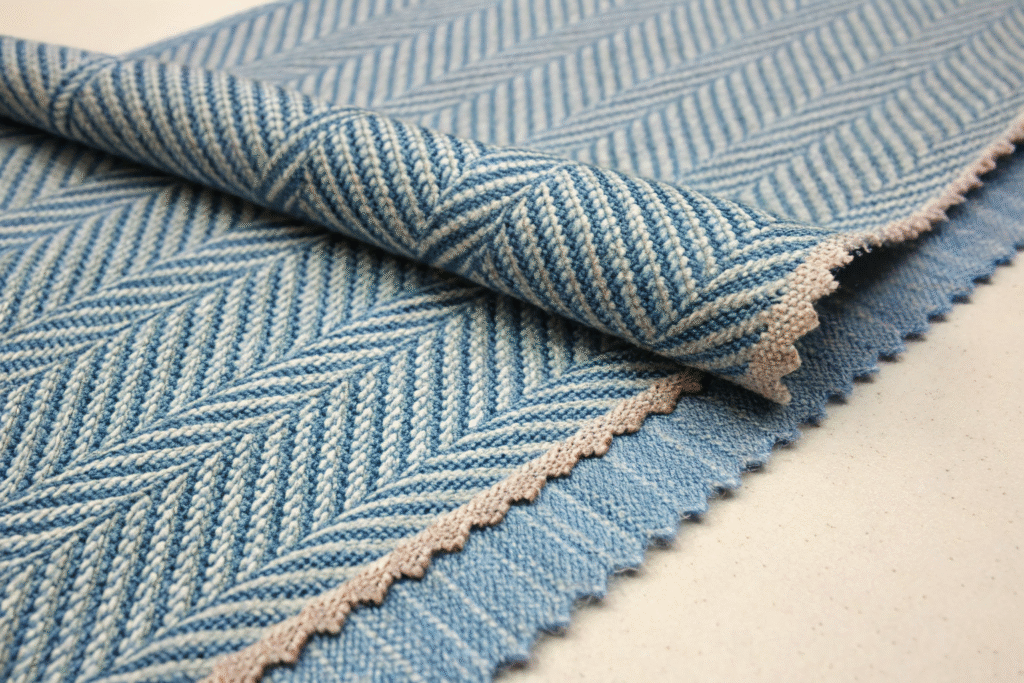
How can you identify bow and skew defects?
The simplest method is the "tear test" or the "snip-and-stretch" method. Make a small cut into the fabric perpendicular to the selvage, then tear it across the width. In a perfectly straight fabric, the tear will follow a straight line. If it curves, you have bow. If it runs diagonally, you have skew. A more precise method involves using a marked grid or a transparent grain line template placed on the fabric. We integrate advanced QR code tracking for our bulk rolls, which includes grain line data, giving our clients real-time access to this critical quality metric before the fabric even leaves our warehouse.
What is the main difference between bow and skew?
While both are grain line distortions, their fundamental nature differs. Bow is a curvature defect; the weft yarns bend. Skew is an angular defect; the weft yarns are straight but slanted. The root causes are often different. Bow is typically introduced in finishing when the fabric's center and edges experience different tensions. Skew is frequently introduced in wet processing stages like dyeing or washing, where the fabric is pulled unevenly. Understanding this distinction helps in pinpointing the problematic stage in the supply chain and implementing the correct corrective measures.
Why is controlling bow and skew crucial for garment production?
Ignoring bow and skew is a costly mistake. In today's competitive market, where brands like ZARA and H&M demand perfection, these defects directly impact your bottom line and brand integrity. They are not just aesthetic issues; they are functional failures that manifest during the manufacturing process. For our client Ron, who ships from China to the U.S., controlling this means avoiding costly tariffs on defective goods and ensuring timely delivery to his customers.
The primary impact is on material waste and cutting efficiency. When the grain is not straight, automated cutting machines cannot align patterns correctly. This leads to mis-cut parts, pattern mismatches at seams, and a significant increase in fabric waste. In an industry where every centimeter of fabric counts, this waste directly erodes profit margins. Our agile supply chain and focus on high yield are designed to minimize this waste, giving our clients a competitive edge on price without sacrificing quality.
Secondly, it affects the final garment's appearance and performance. A shirt made from skewed fabric will have seams that pull and twist, causing the garment to hang awkwardly on the body. After washing, this twisting can become more pronounced, leading to customer dissatisfaction and returns. For performance wear and athleisure, where fit is paramount, this is unacceptable. Our functional fabrics, with features like moisture-wicking and UV protection, are guaranteed to have controlled bow and skew, ensuring the technical performance is matched by superior construction.
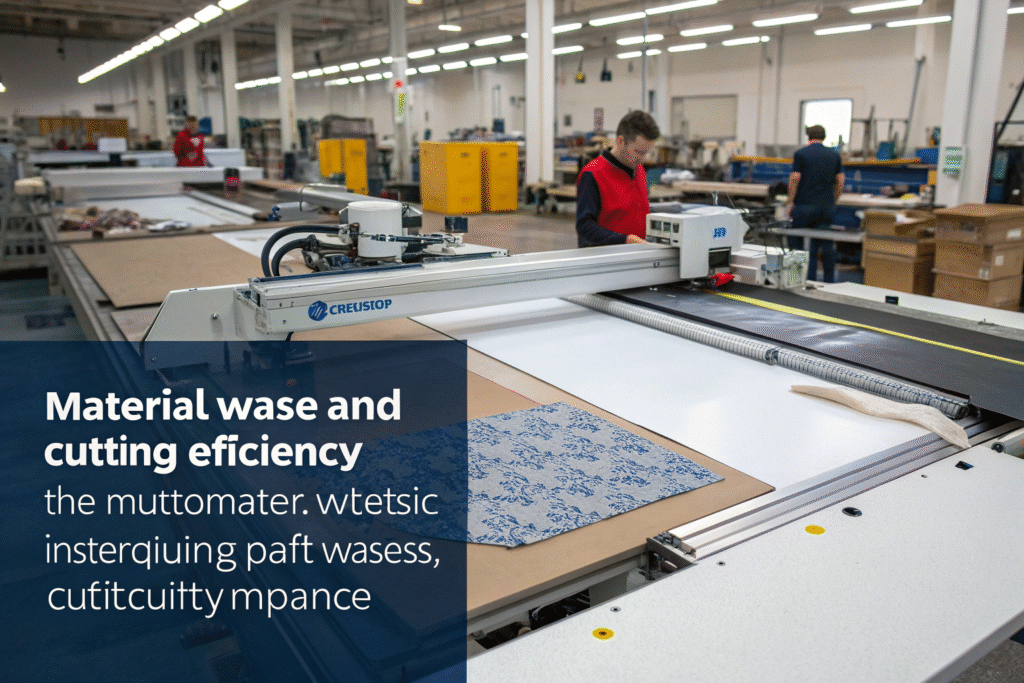
How does bow and skew impact large-scale cutting?
On a large cutting table, multiple layers of fabric are spread. If the grain is distorted, the marker (the digital blueprint of the pattern pieces) will not be aligned with the yarns on every layer. This results in:
| Consequence | Impact |
|---|---|
| Pattern Misalignment | Plaids or stripes not matching at seams. |
| Size Inconsistency | Parts from the same size tag fitting differently. |
| Increased Waste | More fabric needed to compensate for misalignment. |
This is why our end-to-end quality control process includes mandatory bow and skew checks at multiple stages, ensuring a 98% pass rate for our clients' bulk orders.
Can bow and skew cause garment twisting?
Absolutely. This is one of the most common and visible consequences. When woven fabric is cut off-grain, the inherent tension in the yarns is unbalanced. Once the garment is subjected to the stress of wear and washing, it relaxes into its "natural" state, which is twisted. This is especially problematic for basic fashion essentials like dresses and trousers. By controlling the fabric grain from the start, we help our clients build durable, high-quality garments that maintain their shape and appearance.
What are the root causes of bow and skew in fabric?
To control a problem, you must first understand its origin. Bow and skew are almost never a weaving loom issue. They are primarily introduced in the post-weaving stages: dyeing, finishing, and handling. At Fumao, with our integrated network of dyeing, printing, and coating factories, we have direct control over these processes, allowing us to implement precise corrective measures.
A major cause is mechanical stress during finishing. The tentering frame, a machine that holds the fabric by its edges under tension while it dries or cures, is a common culprit. If the pins or clips on the two chains of the tenter do not advance at exactly the same speed, it introduces skew. Similarly, if the fabric is not centered correctly, it can cause bow. Our partner dyeing and finishing factories use modern, computer-controlled tenters that minimize this risk, a key part of our value proposition for quality-focused buyers.
Improper handling in wet processing is another key factor. In rope dyeing machines or jet dyeers, fabric moves in a continuous loop. If the flow is turbulent or the fabric is not guided properly, it can be pulled diagonally, setting in a permanent skew. The use of guiding devices and spreader rollers is critical here. We invest in our partner factories to ensure they have the right equipment, because we know that for our clients, consistent quality is as important as our 48-hour sample development speed.
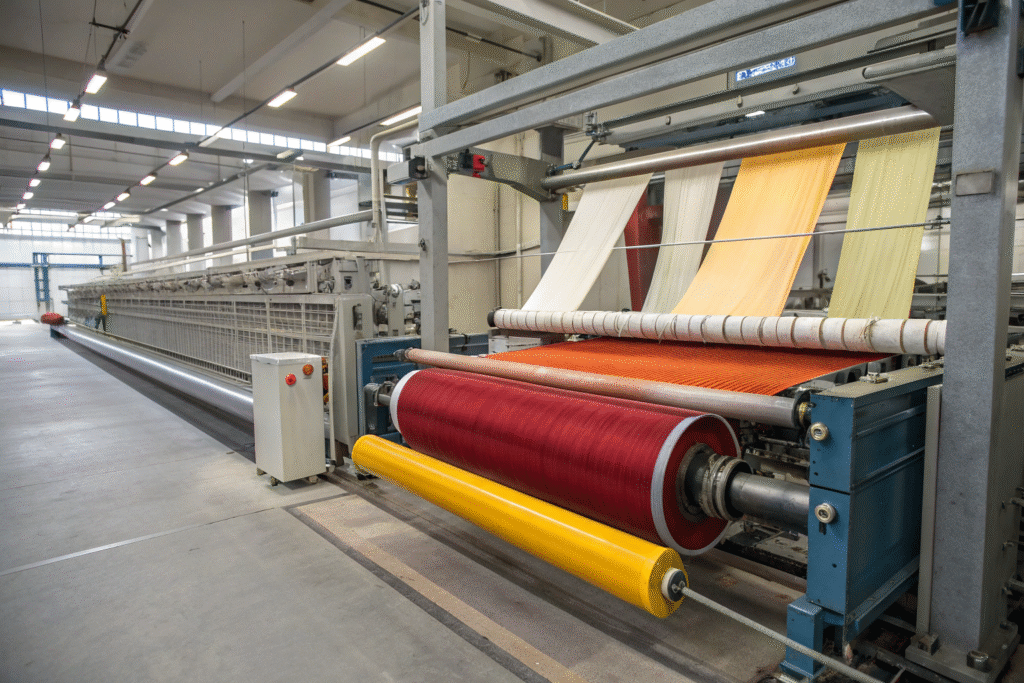
How does the tenter frame cause distortion?
The tenter frame is designed to set the fabric width and apply heat for finishing. However, it can be a source of distortion:
- Uneven Pin Speed: If one side of the tenter chain moves faster than the other, it pulls the fabric diagonally, creating skew.
- Misaligned Fabric Entry: If the fabric is fed onto the tenter frame off-center, the pins on one side will stretch the fabric more than the other, creating a bow.
Modern machines with automated guiding systems have largely overcome this, which is why we partner with facilities that use this advanced technology.
Can fabric composition influence bow and skew?
Yes, the fiber content plays a role. Fabrics made from natural fibers like cotton or wool are more prone to distortion because they are more pliable and react to tension and moisture. Synthetic fabrics like polyester or nylon are more stable but can still be distorted by aggressive mechanical handling. Blended fabrics, such as poly-cotton, offer a balance. Our diverse portfolio, from linens to high-performance elastics, is produced with an understanding of how each material behaves under stress, allowing for process customization.
How can fabric suppliers effectively control bow and skew?
Control is a combination of the right technology, skilled personnel, and rigorous processes. At Fumao, this isn't an afterthought; it's built into our operational DNA. From the moment the yarn is sourced to the final packaging, we have checks in place to ensure grain stability. This is the kind of professional service that partners like Ron value, as it directly addresses his pain points of timeliness and quality control.
Investing in modern, computerized machinery is the first step. As mentioned, automated tenter frames with edge guides and even pinning systems are essential. Similarly, open-width processing machines (as opposed to rope form) for dyeing and washing minimize the physical manipulation that causes skew. Our cooperative dyeing and finishing partners are equipped with this modern machinery, which is a non-negotiable requirement for our collaboration. This investment is part of our commitment to delivering fabrics that are not affected by the common issues that plague other suppliers.
Implementing a rigorous quality control protocol is the second step. This involves:
- On-Line Monitoring: Using sensors on the finishing machines to detect and correct skew in real-time.
- Off-Line Inspection: 100% inspection on lighted inspection tables to visually identify and mark any bow or skew before the fabric is rolled. Our dedicated QC team is trained to meet international standards, providing an extra layer of security for our clients.
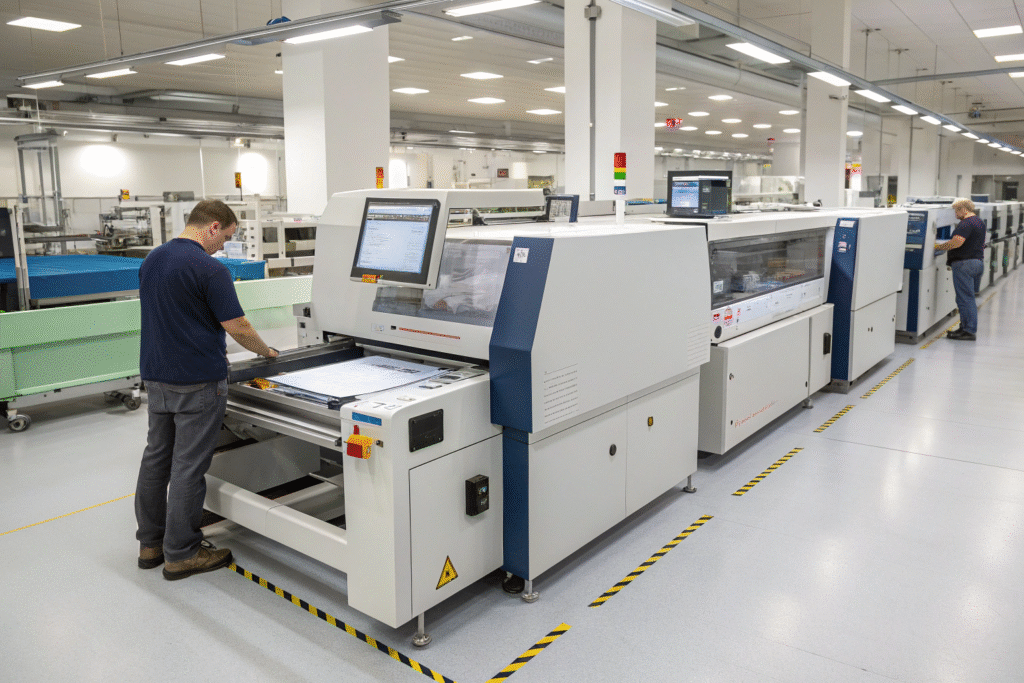
What role does on-line monitoring play?
On-line monitoring systems use optical sensors to track the weft yarns as the fabric moves at high speed. If the system detects a deviation from the 90-degree angle, it sends a signal to the machine's guiding system to make a micro-adjustment. This real-time correction is far more effective than trying to fix the problem after the fact. It is a key technology in our supply chain that supports our claim of high yield and fast, reliable production.
How important is supplier partnership for control?
It is everything. You cannot control what you do not manage. Many traders simply source fabric without visibility into the production process. Because we have a large-scale weaving factory and closely managed partnerships with dyeing and finishing plants, we can enforce our strict quality parameters. We don't just sell fabric; we co-create value by managing the entire process. This ensures that when you order from us, you get fabric with minimal bow and skew, correct packaging, and smooth customs clearance, all while avoiding US tariffs through our strategic logistics planning.
Conclusion
Bow and skew are critical quality parameters in woven fabric that directly impact your production efficiency, material costs, and the final quality of your garments. Understanding their causes—primarily in finishing and wet processing—is the first step toward controlling them. The solution lies in partnering with a supplier that has the technical expertise, modern equipment, and rigorous quality control systems in place to manage these distortions proactively.
At Fumao Textiles International, we bridge the gap between high-quality fabric production and the practical needs of global buyers. We provide the assurance that your fabric will be produced and delivered with the precision your brand deserves. If you are looking for a reliable partner to co-create your next clothing line with guaranteed quality control, let's talk.
For a direct conversation about how we can support your specific needs, please contact our Business Director, Elaine, at elaine@fumaoclothing.com. We are here to help you weave your success story.

